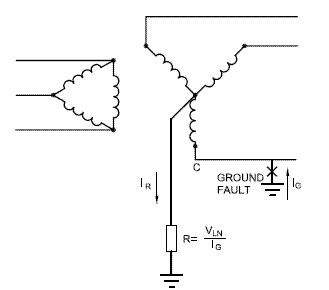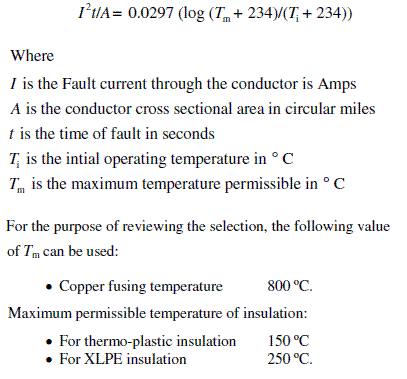- This topic has 2 replies, 1 voice, and was last updated 2 years, 11 months ago by .
-
Topic
-
Any one can sugguest for neutral cable size for 75mva, 66/22kv, delta/ star)?.my neutral cable is connecting thro NGR value is 6.5 ohm. fault level is31.5kA. lv cable size is 3x(3x1c 630).provide sample calculation also.
Any one can sugguest for neutral cable size for 75mva, 66/22kv, delta/ star)?.my neutral cable is connecting thro NGR value is 6.5 ohm. fault level is31.5kA. lv cable size is 3x(3x1c 630).provide sample calculation also.
Viewing 2 replies - 1 through 2 (of 2 total)
Viewing 2 replies - 1 through 2 (of 2 total)
- You must be logged in to reply to this topic.

 Low-resistance grounding finds application in medium-voltage systems of 15 kV and below, particularly where large rotating machinery is used. By limiting ground-fault currents to hundreds of amperes, instead of thousands of amperes, damage to expensive equipment is reduced. But about your problem, as you say your earth fault current is 1956 A approximately. For continue to calculation you can refer to IEEE 80 or similar guide. You need some additional data for completion your calculation. Section 250-118 of NEC: 1999 permits the use of various grounding conductors including tubular conduits used as cable raceway, cable armor and cable trays. Where grounding conductors are employed, it must be ensured that they are sized to withstand ground fault currents of value and duration appropriate to the circuit under consideration. If the conductor sizing is inadequate, the following may result: – Damage to the insulation of the ground conductor: In case the conductor is bare, insulation damage may occur in the phase conductor with which it is in contact. – Fusing of the ground conductor in extreme cases: Though this will result in the interruption of the fault current, it will cause the potential of the enclosure of the faulted equipment to rise beyond acceptable limits. The maximum temperature of the conductor during a fault can be calculated by the formula:
Low-resistance grounding finds application in medium-voltage systems of 15 kV and below, particularly where large rotating machinery is used. By limiting ground-fault currents to hundreds of amperes, instead of thousands of amperes, damage to expensive equipment is reduced. But about your problem, as you say your earth fault current is 1956 A approximately. For continue to calculation you can refer to IEEE 80 or similar guide. You need some additional data for completion your calculation. Section 250-118 of NEC: 1999 permits the use of various grounding conductors including tubular conduits used as cable raceway, cable armor and cable trays. Where grounding conductors are employed, it must be ensured that they are sized to withstand ground fault currents of value and duration appropriate to the circuit under consideration. If the conductor sizing is inadequate, the following may result: – Damage to the insulation of the ground conductor: In case the conductor is bare, insulation damage may occur in the phase conductor with which it is in contact. – Fusing of the ground conductor in extreme cases: Though this will result in the interruption of the fault current, it will cause the potential of the enclosure of the faulted equipment to rise beyond acceptable limits. The maximum temperature of the conductor during a fault can be calculated by the formula:  Current and time setting of interrupting device should not cause unacceptable temperature rise of the grounding conductor. If, however, this exceeds the limits of temperature, the following are the options: – Increase the size of the grounding conductor – Adding special ground fault equipment to the system to sense even low value of earth fault currents and trip the circuit faster. For example note to following problem. A circuit has a ground fault current of 3000 A. Calculate the cross section of the copper grounding wire to be used assuming that the current will be interrupted in 300 m sec. The final temperature that the grounding wire can assume should be restricted to 150
Current and time setting of interrupting device should not cause unacceptable temperature rise of the grounding conductor. If, however, this exceeds the limits of temperature, the following are the options: – Increase the size of the grounding conductor – Adding special ground fault equipment to the system to sense even low value of earth fault currents and trip the circuit faster. For example note to following problem. A circuit has a ground fault current of 3000 A. Calculate the cross section of the copper grounding wire to be used assuming that the current will be interrupted in 300 m sec. The final temperature that the grounding wire can assume should be restricted to 150